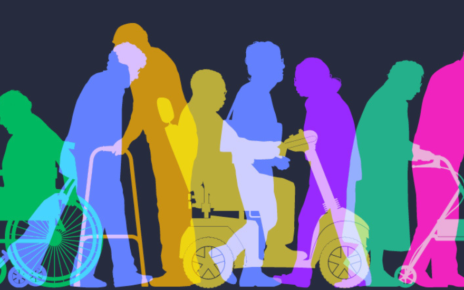Physiotherapy is one of the fastest-growing branches of modern medicine. The methods and types of work with the patient included in these therapy departments are commonly used in health care facilities and spas and are practiced for the benefit of sports, recreation, and cosmetology.
Physiotherapy is recommended in the course of treating many diseases of the musculoskeletal system, internal and even mental diseases. A physiotherapist can only carry out orders, and a physiotherapist can participate in diagnosing disorders that burden the body, plan treatment procedures and perform ordered treatments. It is a theory closely translated into practical action in working with the patient.
Physiotherapy and rehabilitation

The dynamic development of medical sciences causes the constant evaluation of nomenclature in terms of improving the patient’s health and confusion in the use of individual terms. The problem of differentiating rehabilitation and physiotherapy is even noticed by international medical authorities.
Rehabilitation means “a set of activities, in particular organizational, therapeutic, psychological, technical, training, educational and social activities aimed at achieving, with the active participation of these people, the highest possible level of their functioning, quality of life and social integration” [1].
Physiotherapy is a medical discipline dealing with alleviating the symptoms of disease processes, preventing the occurrence of pathologies, and restoring the psychophysical fitness of the human body. In terms of methodology, it is closely related to the sciences of physical culture as well as behavioral and social fields (including psychological, pedagogical, and sociological), thanks to which it is possible to properly understand the development processes, maintain and restore the motor and functional abilities of the human body.
This Therapy is a field of treatment that uses all forms of physical energy occurring in nature, such as movement, thermal, kinetic, mechanical, electrical, light, and chemical stimuli.
Physiotherapy

It focuses on diagnosing, pulling out, and restoring maximum motor potential. Complete and functional motor activities are the determinant of a patient’s health.
Physiotherapy and rehabilitation are not synonymous and their interchangeability is incorrect and confusing. Rehabilitation is a whole range of improvement activities, while physiotherapy is a field of medical science used in the process of improvement, health promotion, and prevention.
Aims of physiotherapy
The main goal of this therapy is to prevent disease progression, restore physical and functional fitness, and prevent recurrence of functional disorders and pathologies. As part of the services provided to the patient, the physiotherapist is competent to examine, evaluate and diagnose functional, prognosis, programming, evaluation, and treatment.
The goals are achieved through the use of methods that are also branches of this therapy.
Physiotherapy departments
The overall it consists of:
- Kinesiotherapy, i.e. patient management related to the use of exercise as a therapeutic agent that may have local and general effects. Kinesiotherapy is used as a basic and independent form of treatment or a method combined with surgical treatment. Stands out:
- local kinesitherapy – engages no more than 30% of dynamic muscle groups, focuses on specific structures of the musculoskeletal system. Its purpose is to restore lost functions of this part of the body or to create compensation mechanisms;
- general kinesitherapy – affects the efficiency and systemic condition of the whole organism.
- Physical therapy, i.e. a part of physical medicine in which natural or artificially obtained physical factors (thermal, physical, chemical) are used, exerting specific local and general reactions in the course of deliberate action on the human body.
- Massage, which is a therapeutic procedure that uses mechanical pressure on the tissues of the body with the hands of a masseur, vibrating devices, a stream of water, or water whirls.
Practical physiotherapy

The activity of this therapy is multidimensional also due to some kind of specialization focused on working in specific types of diseases, for example:
- General physiotherapy focuses on improving the patient’s performance and prevents the consequences of hypokinesia.
- Clinical physiotherapy focuses on achieving goals in the area of internal diseases and neurological and orthopedic dysfunctions.
- Sports physiotherapy and spine physiotherapy diagnose and treat pain in the musculoskeletal system.
- Physiotherapy for children uses all methods and techniques of work in recognizing the regularities and treating developmental pathologies of children.
What after physiotherapy?
The number of professionally active physiotherapists is constantly growing. This phenomenon is closely related to the progressive aging of society and the epidemic of civilization diseases and the resulting demand for physiotherapeutic and rehabilitation care.
Another article on this blog that may interests you:





